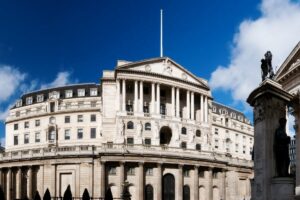Markets, households and students face painful disruption next year if inflation hits 7% as currently implied by inflation-linked bonds, says Mark Benbow, high yield portfolio manager at Aegon Asset Management.
With GDP RPI inflation swaps implying a surge in inflation in 2022, Benbow says few will escape the squeeze on prices, with RPI-linked loan holders particularly exposed to much higher borrowing costs.
“You don’t need to look far to see inflation – commodity prices are rising rapidly, as are other input costs such as shipping,” he says. “And with the rising cost of living, it’s only a matter of time before employers realise that they will need to increase wages.
“That may sound like a good thing, but consider that index-linked bonds are implying that RPI will hit 7% in 2022. If that comes to fruition, it will disrupt markets, households and students, who are painfully charged student loan interest on an RPI +3% basis, meaning they will be paying interest of 10%.”
Corporates will also feel the pain, says Benbow, who says the key question is to what extent they will seek to pass on rising costs to consumers.
“Third quarter earnings will tell us more but we likely to see quite a bit of margin compression,” he says. “The scary thing is that if you are a 10% margin business which is 7x leveraged and your margin goes to 5% – which is very easily done – you effectively double your leverage. Real yields simply aren’t high enough to compensate investors for this.”
He believes bond markets should reprice to a more appropriate level given the risks, particularly in the US, but he says central banks have found themselves in an uncomfortable position.
“Central banks are now in trouble if they reduce QE, which would see yields rise and destabilise asset prices, and in trouble if they don’t,” he says. “Ultimately, the low cost of capital is underpinning everything but how can you justify such a low cost of capital when real yields are so negative? As we know from 2018, even a small rise in the cost of capital is a very nasty thing for asset prices – and valuations today, in real yield terms, have never been so expensive.”
Given this backdrop, Benbow says the high yield team is seeking opportunities in names that are benefitting from rising prices and avoiding those impacted by disrupted supply chains.
“We like companies that make the commodities that are rising fast in price and are thus beneficiaries of inflation in areas like coffee, corn, cotton and metals – and we like shipping, which is doing very well,” he says. “We also like household names which aren’t affected by supply chain problems, like David Lloyd* and PureGym*, which still provide a yield of 5% or more.”
*Held in the Aegon High Yield Bond Fund and Aegon High Yield Global Bond Funds.

















